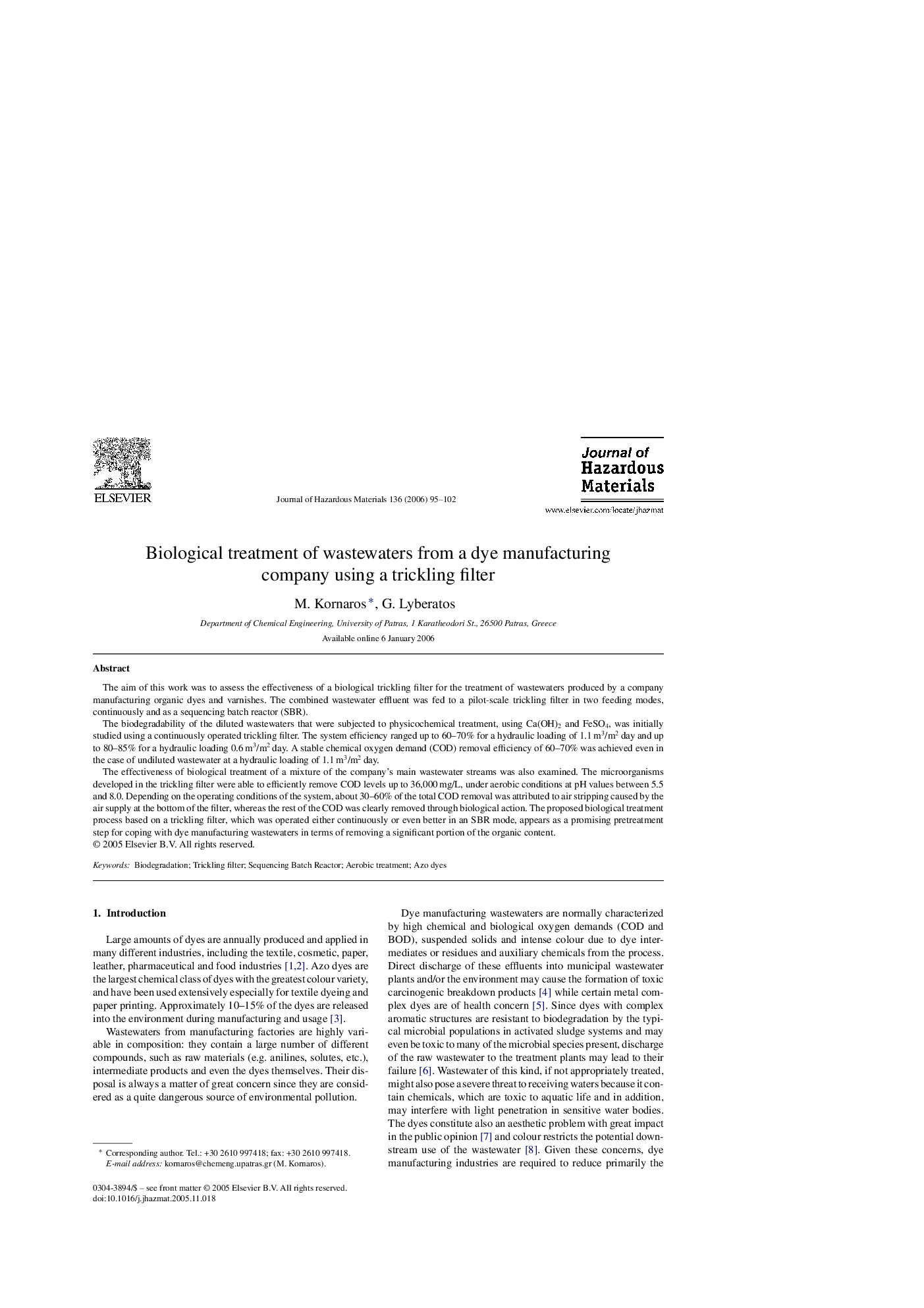| Article ID | Journal | Published Year | Pages | File Type |
|---|---|---|---|---|
| 585793 | Journal of Hazardous Materials | 2006 | 8 Pages |
The aim of this work was to assess the effectiveness of a biological trickling filter for the treatment of wastewaters produced by a company manufacturing organic dyes and varnishes. The combined wastewater effluent was fed to a pilot-scale trickling filter in two feeding modes, continuously and as a sequencing batch reactor (SBR).The biodegradability of the diluted wastewaters that were subjected to physicochemical treatment, using Ca(OH)2 and FeSO4, was initially studied using a continuously operated trickling filter. The system efficiency ranged up to 60–70% for a hydraulic loading of 1.1 m3/m2 day and up to 80–85% for a hydraulic loading 0.6 m3/m2 day. A stable chemical oxygen demand (COD) removal efficiency of 60–70% was achieved even in the case of undiluted wastewater at a hydraulic loading of 1.1 m3/m2 day.The effectiveness of biological treatment of a mixture of the company's main wastewater streams was also examined. The microorganisms developed in the trickling filter were able to efficiently remove COD levels up to 36,000 mg/L, under aerobic conditions at pH values between 5.5 and 8.0. Depending on the operating conditions of the system, about 30–60% of the total COD removal was attributed to air stripping caused by the air supply at the bottom of the filter, whereas the rest of the COD was clearly removed through biological action. The proposed biological treatment process based on a trickling filter, which was operated either continuously or even better in an SBR mode, appears as a promising pretreatment step for coping with dye manufacturing wastewaters in terms of removing a significant portion of the organic content.
